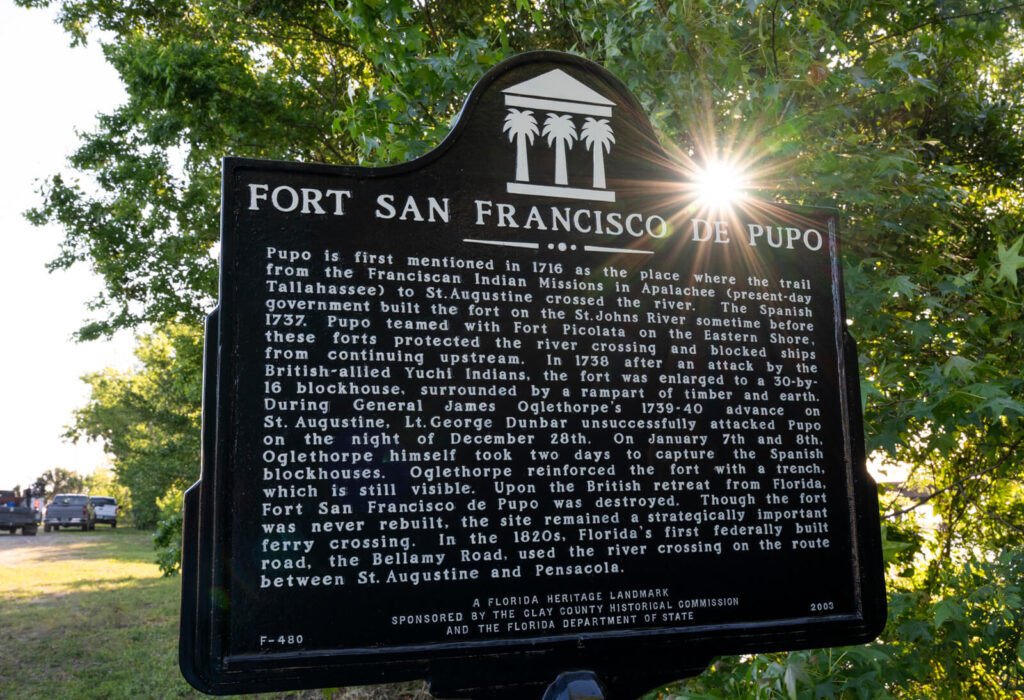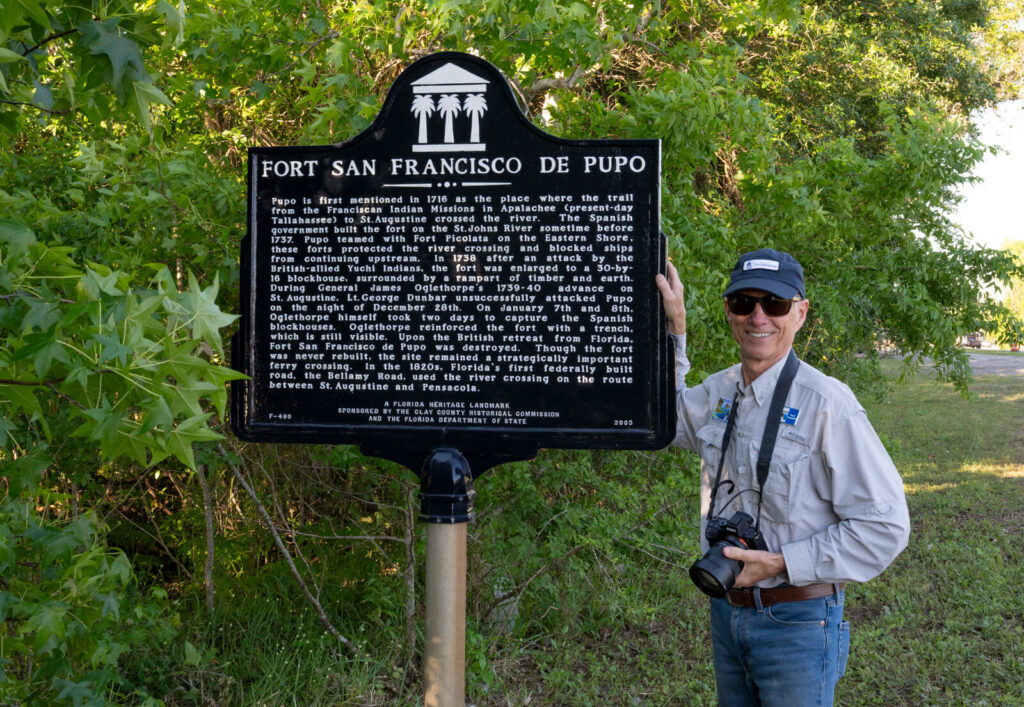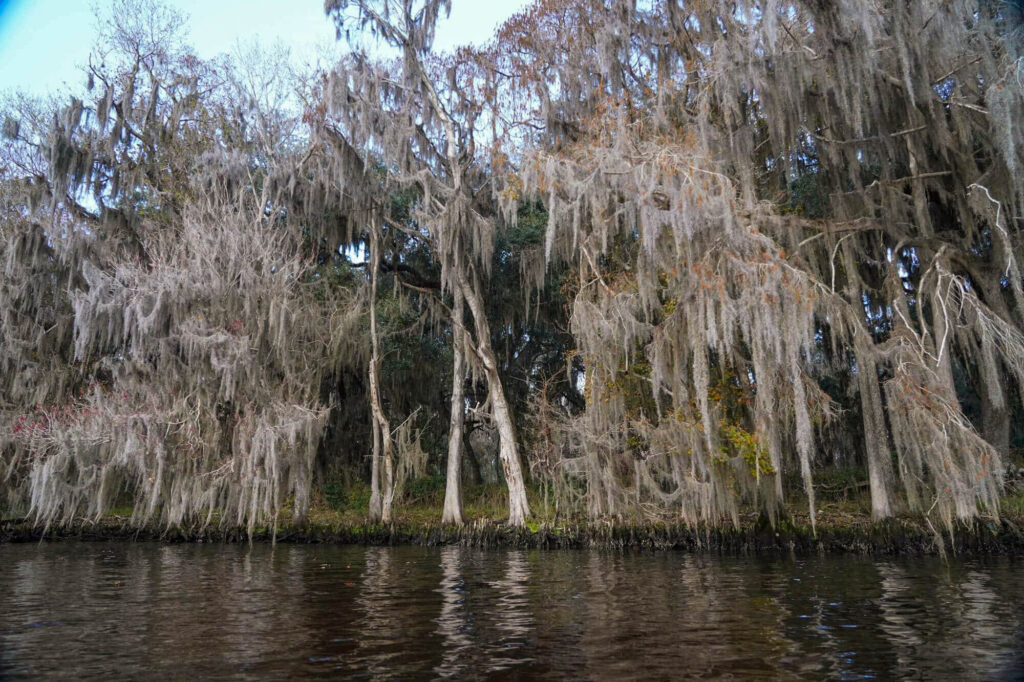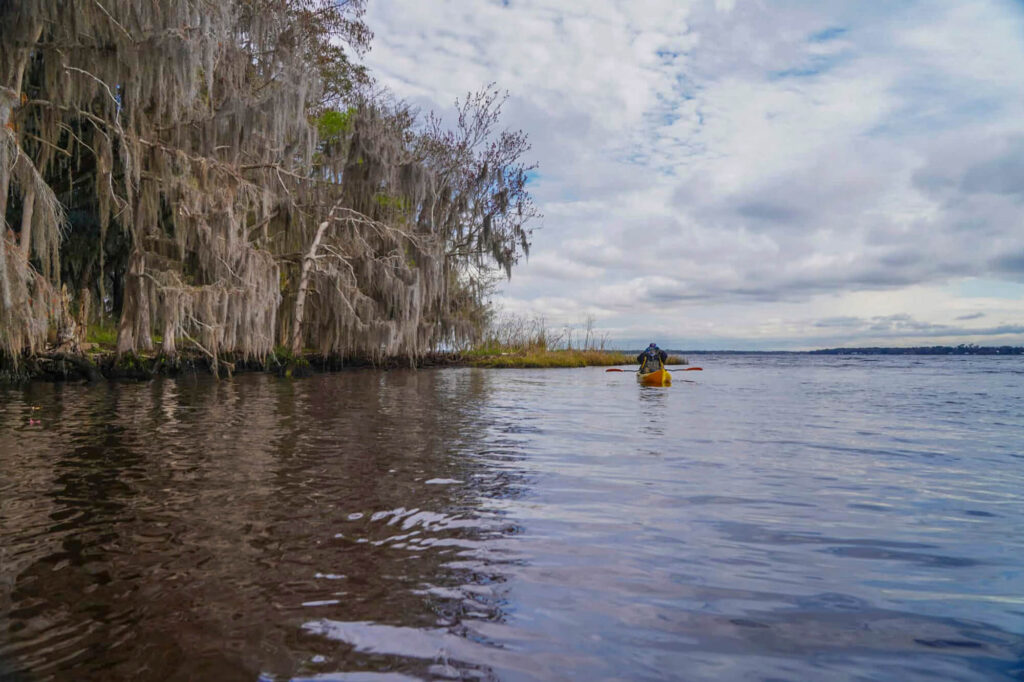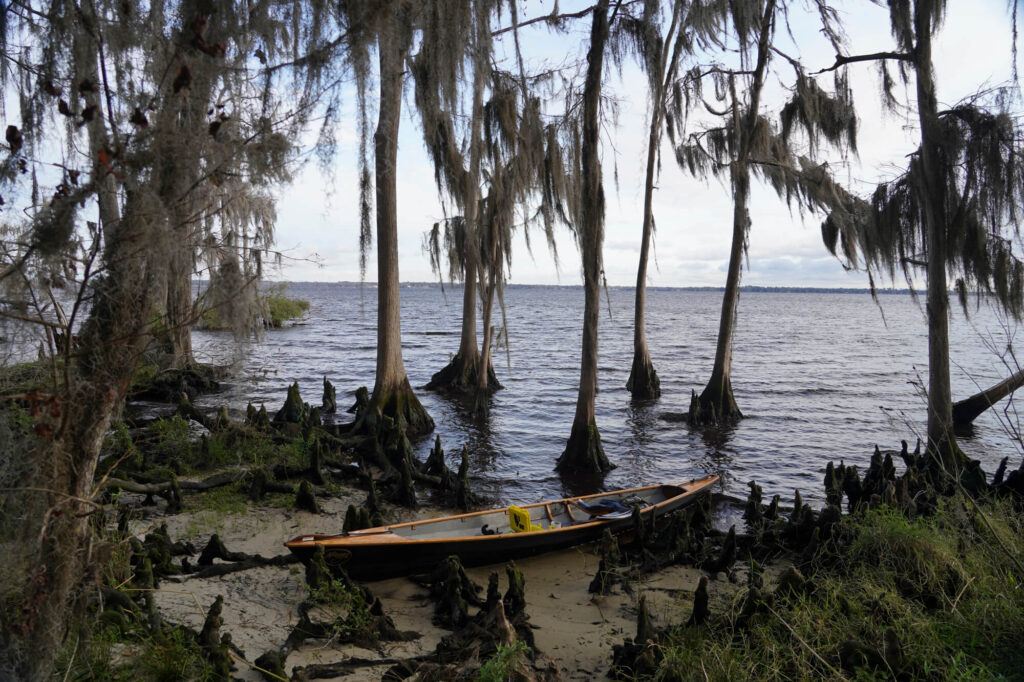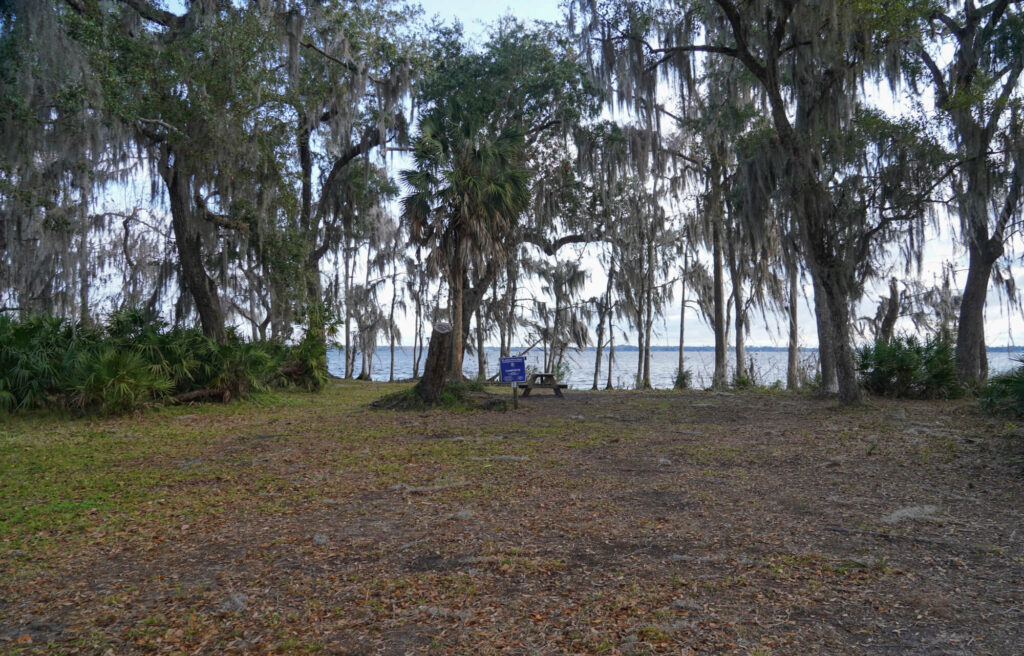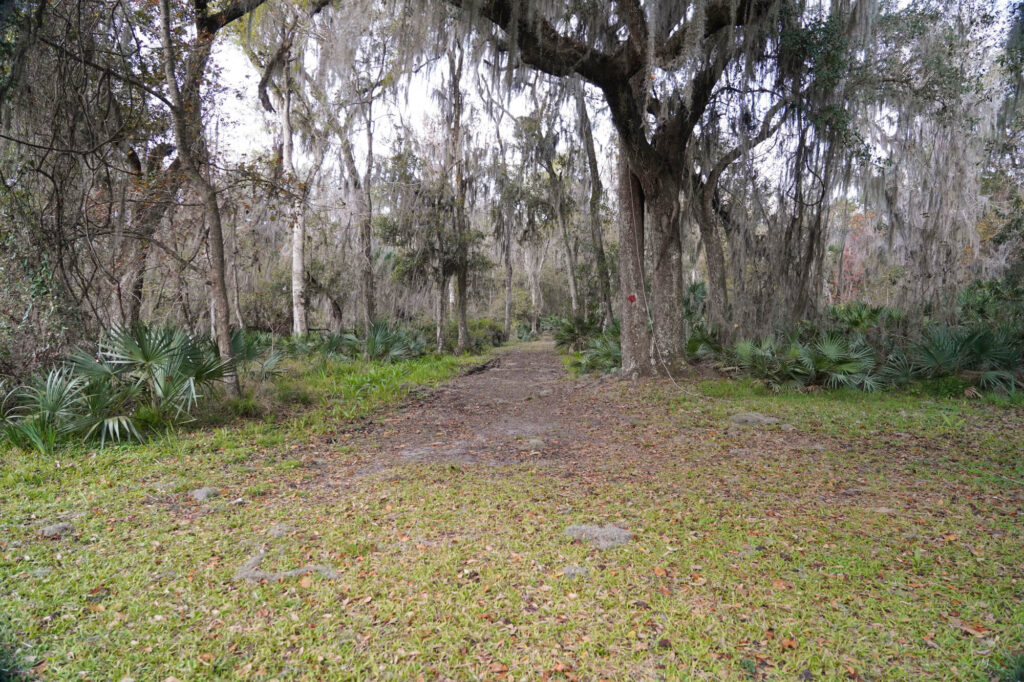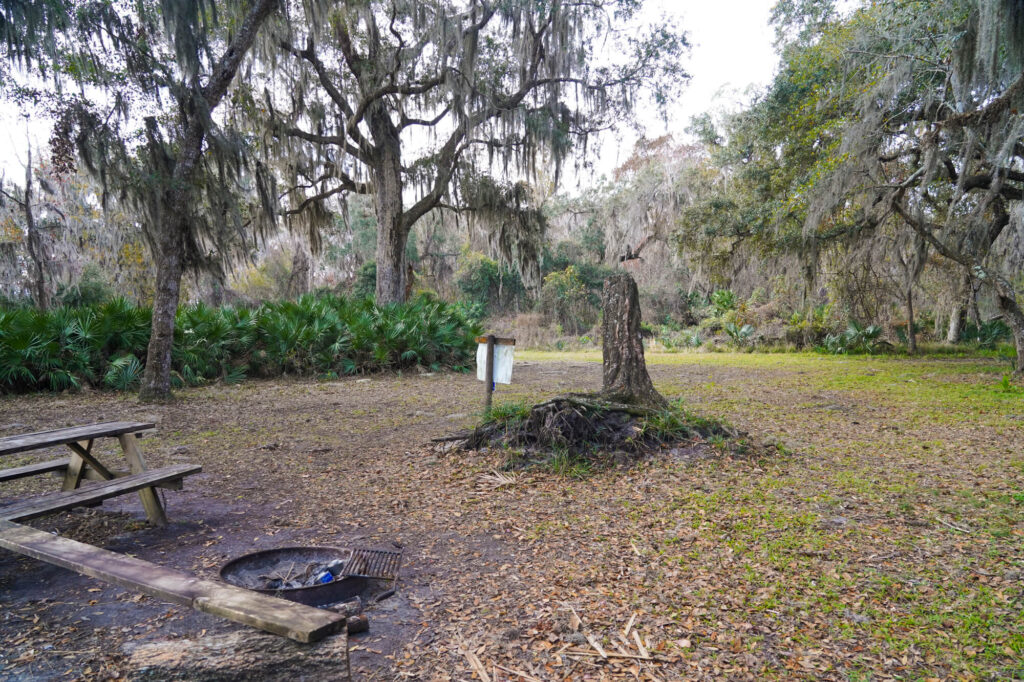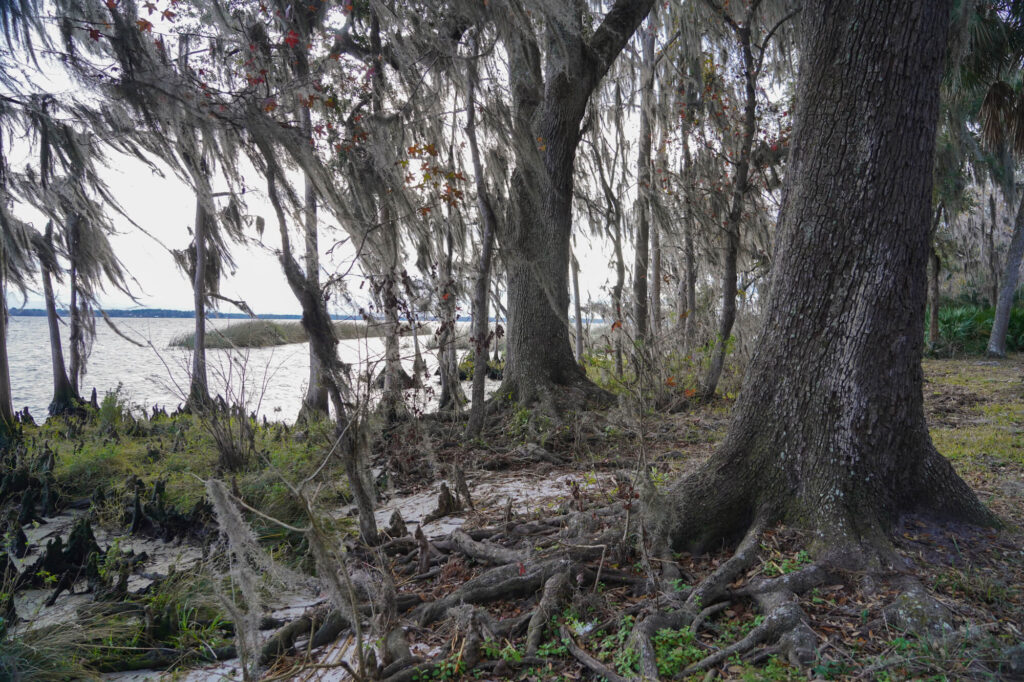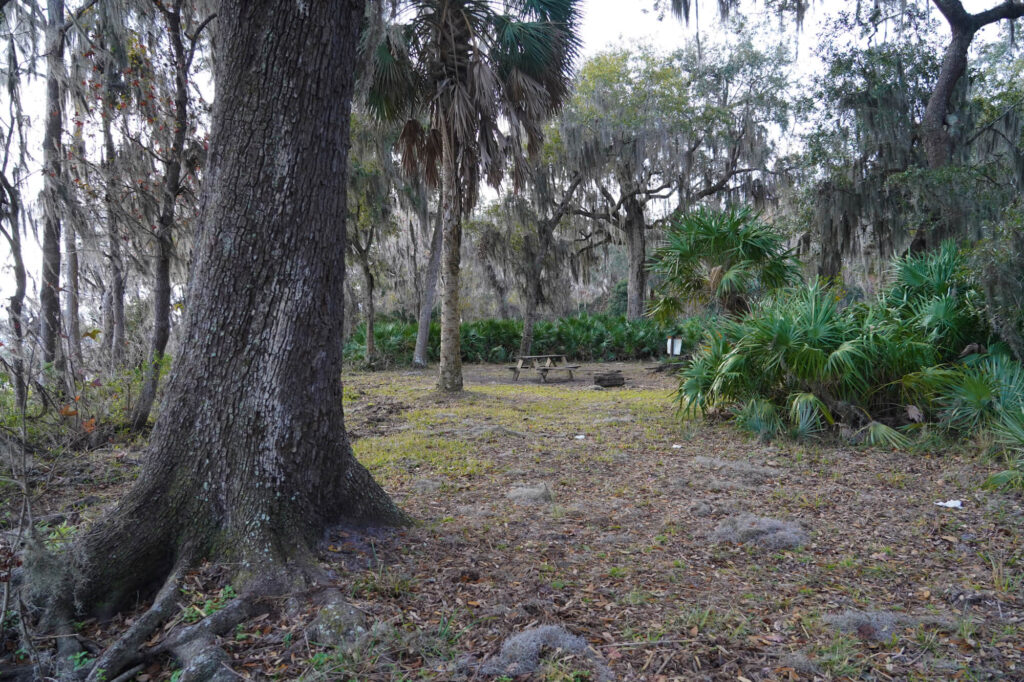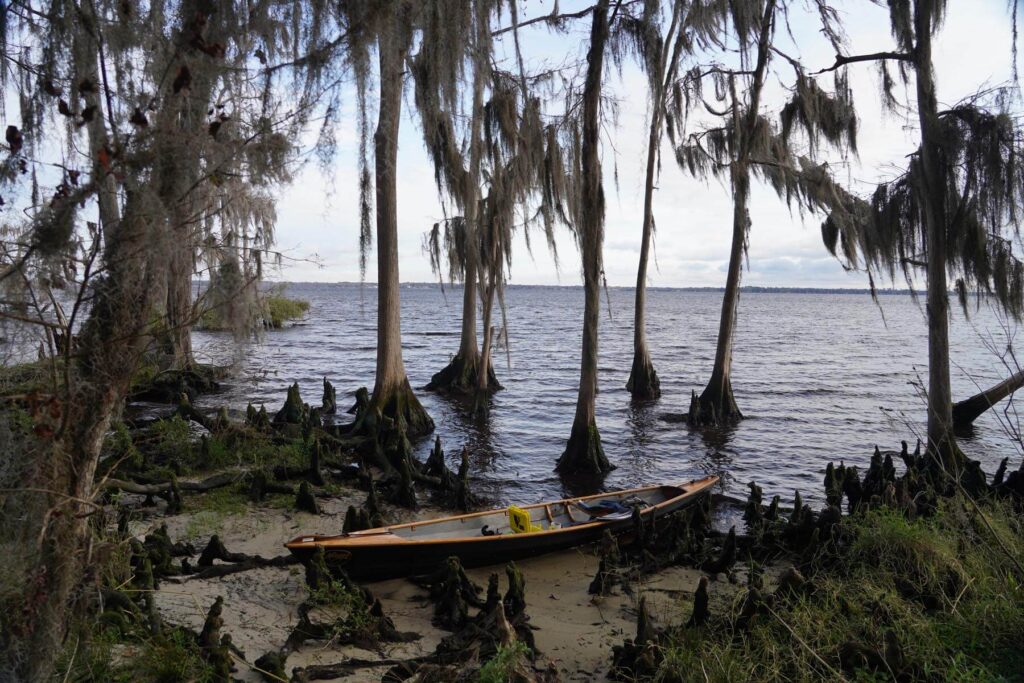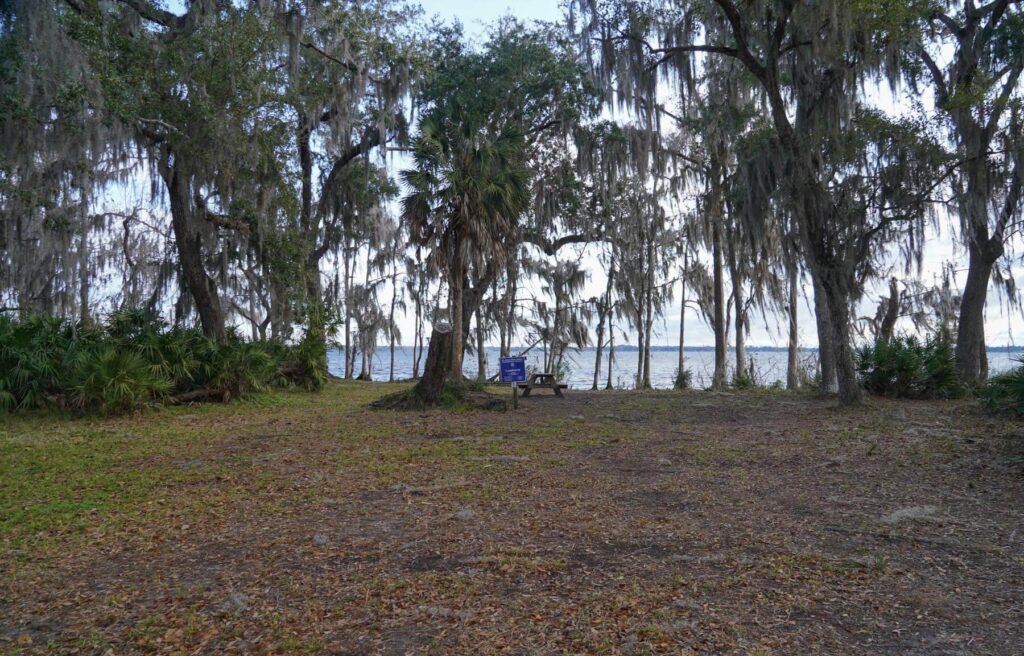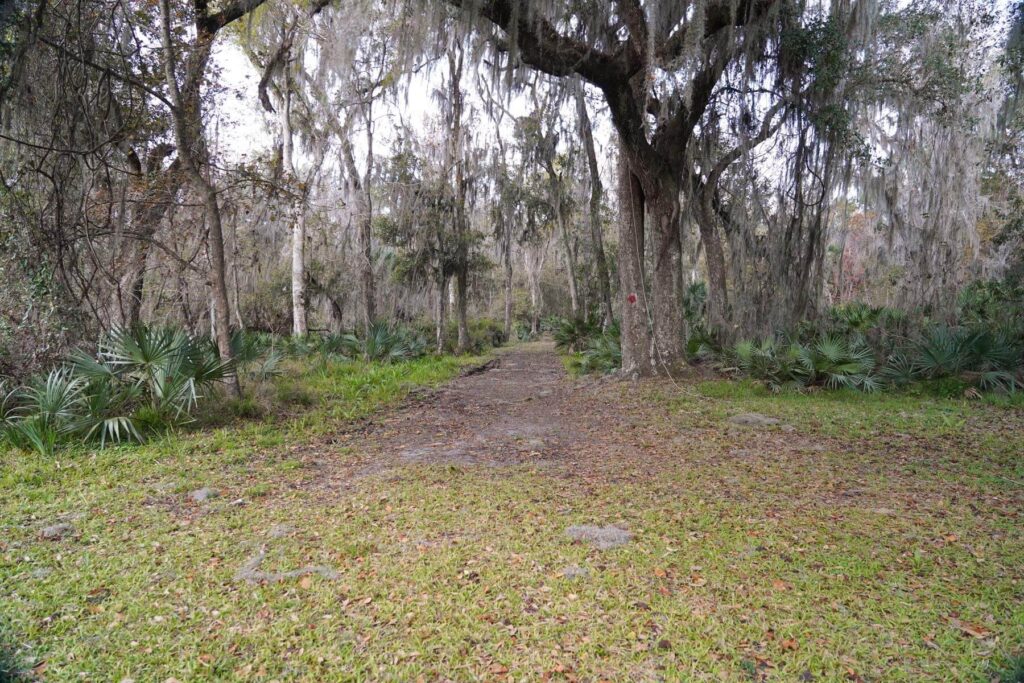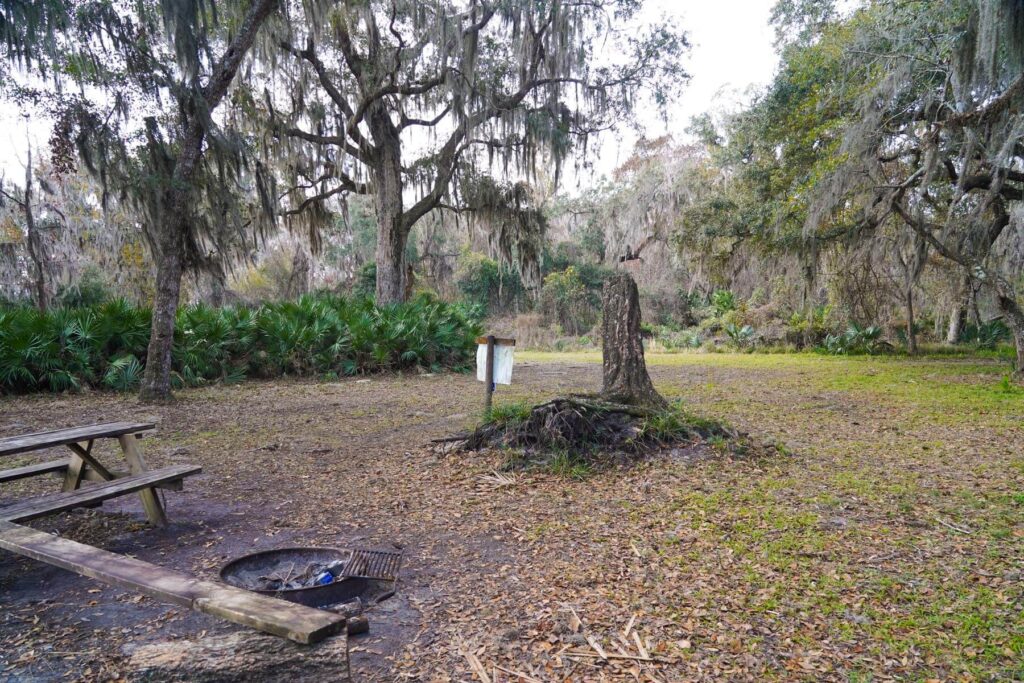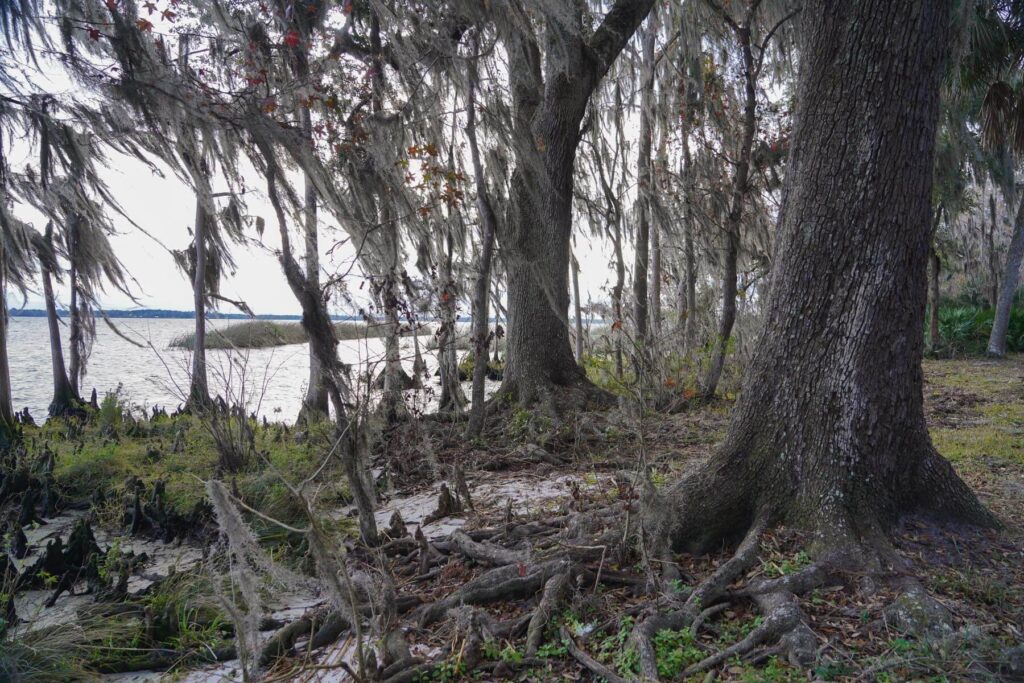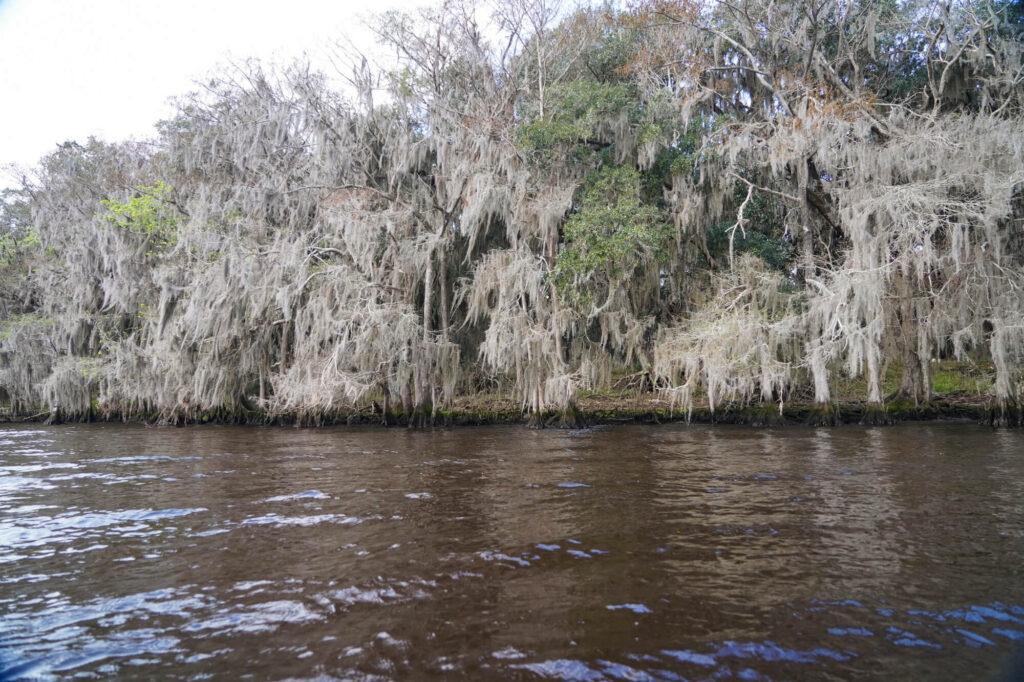07 Fort San Francisco de Pupo
Clay County
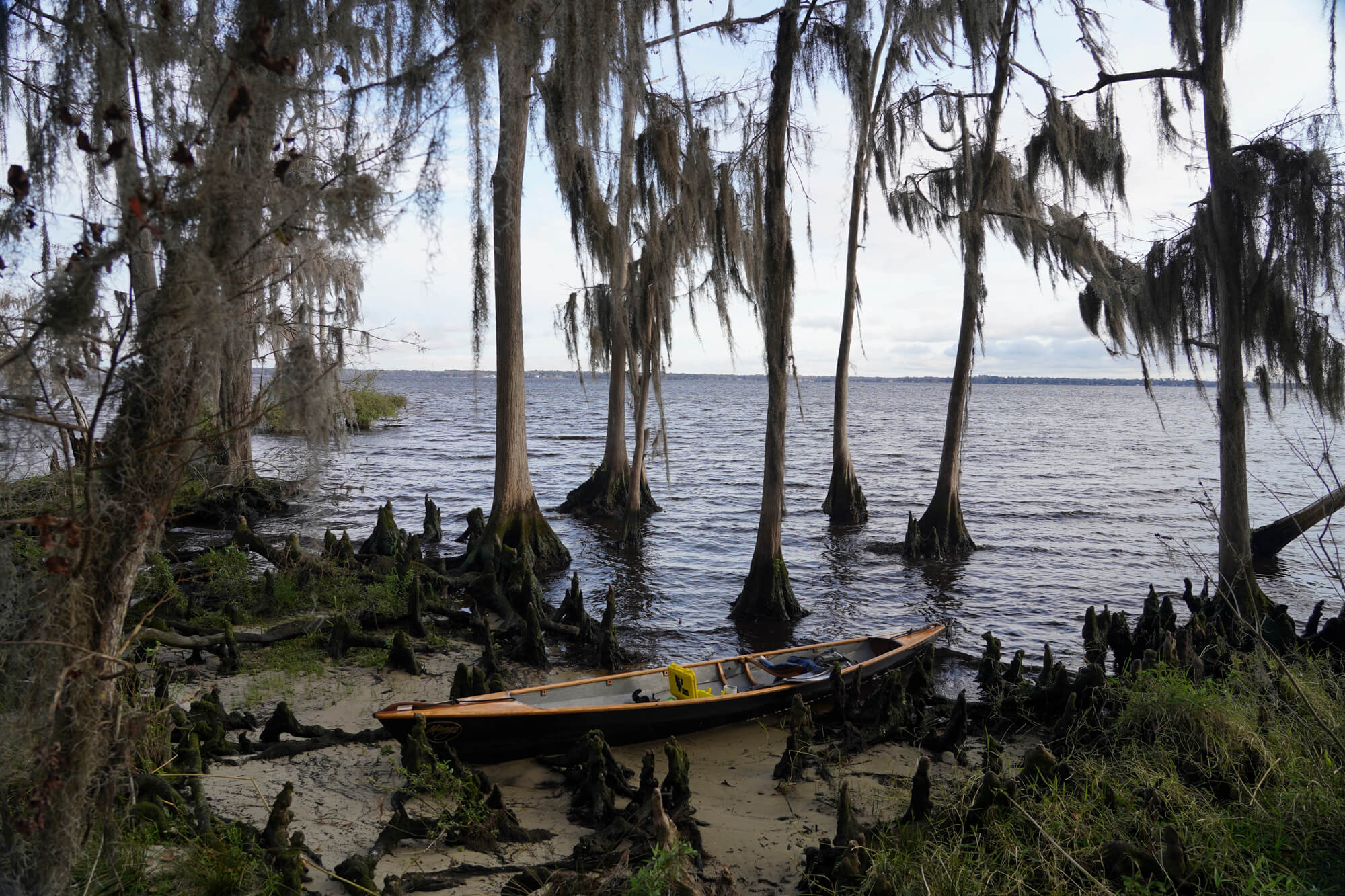
Landed at Popa fort, a small shallow entrenchment almost filled up with length of time..
J.P. Hall Bayard Point Conservation Area’s Davis Landing commentary
On this date, the Bartrams landed on the west shore and explored the site of Fort de Pupo. The actual site of the Fort is only a short distance south of Bayard Point and Davis Landing. However, the actual site of the Fort is located on private property and can not be visited. Davis Landing was selected as representative of the site because it is on public property (St. Johns River Water Management District), allows camping, has picnic tables and a fire-ring and can be accessed from the River by canoe or kayak or on foot via marked trails in the Conservation Area, and is preserved in a state of nature similar to what the Bartrams would have observed during their visit.
Ft San Francisco de Pupo commentary
The Clay County Historical Commission erected a historical marker for Fort San Francisco de Pupo in 2003. It is located on the south side of SR 16 on the west shore of the St. Johns River at the Shands Bridge.
The Inscription reads: Pupo is first mentioned in 1716 as the place where the trail from the Franciscan Indian missions and the Apalachee (present-day Tallahassee) to St. Augustine crossed the river. The Spanish Government built the fort on the St. Johns River some time before 1737. Pupo teamed with Fort Picolata on the Eastern Shore; these forts protected the river crossing and blocked ships from continuing upstream. In 1738, after an attack by the British-allied Yuchi Indians, the fort was enlarged to a 30-by-16 blockhouse, surrounded by a rampart of timber and earth.
During General James Oglethorpe’s 1739-40 advance on St. Augustine, Lt. George Dunbar unsuccessfully attacked Pupo on December 28th. On January 7th and 8th, Oglethorpe took two days to capture the Spanish blockhouses. Oglethorpe reinforced the fort with a trench, which is still visible. Upon the British retreat from Florida, Fort San Francisco de Pupo was destroyed. Though the fort was never rebuilt, the site remained a strategically important ferry crossing. In the 1820s, Florida’s first federally built road, the Bellamy Road, used the river crossing on the route between St. Augustine and Pensacola.
John Bartram kept a personal Diary. This diary was later transcribed to produce his Journal, which was given to Governor Grant as a deliverable (along with a map of the St. Johns River) for the payment he received for conducting his survey and assessment of the St. Johns River in 1765-6. Dr. Stork later published the Journal in London in an effort to stimulate interest, investment, and settlement in the new American Territory.
It is interesting to compare the pages of the Diary that were not included in the Journal to those which were. Both were published in a paper submitted by Frances Harper to the Transactions of the American Philosophical Society in December of 1942.
There is a distinct difference between the two documents’ wording, punctuation, and readability. It is readily apparent that the Diary was heavily edited to make it more readable for a general audience. Undoubtedly, John and William did some editing before submitting their report to Governor Grant. It is also likely that the text was again edited by Dr. Stork or others before it was published in England.
Unfortunately, the portion of the rough draft of the Diary submitted to Governor Grant has been lost or was not preserved, so it is impossible to compare the pages of the Diary to the same pages in the Journal side by side. However, comparing the text of the two documents makes it apparent that it is not only possible but likely that some confusion resulted when the Diary was edited to make it more “readable.”
A perfect example of this can be seen by comparing the text below from John’s Journal to the excerpt from his Diary on this website under Bartram Trail Site 8, A Little Lagoon, a portion of his Diary that was not included in the published Journal.
With this in mind, it is reasonable to suggest that the Bartrams visited Fort San Francisco de Pupo at its known location and that a crossing of the River ensued between the time they left the Fort and the time they landed at today’s Popo point. It is less likely that John Bartram was confused about the fort’s location since there is no evidence of there having been a third fort, as some Bartram scholars have suggested.
Journal Entry February 2, 1766
Walked this morning to observe the soil, the wind north, and cool, landed at Popa fort, a small shallow entrenchment almost filled up with length of time; ‘tis 20 yards square; and as many from the river; a few yards back of it there is another about twice as big; here is a grove of orange-trees, and many acres of large live oaks, 2 or 3 foot in diameter, adjacent to which is a shallow but good swamp with some cypress-trees ; nearly opposite to this on the west side branches out a creek running 3 or 4 miles, on which grow large red cedars ; and about two miles below it, branches out White or Black River, it bears both names, the last by the English; ’tis navigable above 20 miles, some fay 30, ’tis reckoned 20 to Caldwall’s store, our present boundary with the Creek Indians; this river or creek is about 100 yards wide and 3 fathom deep, more or less, its general course is west; we landed at a pine bluff, 300 yards long and 10 foot perpendicular, more or less, the upper surface of which, for a foot or more deep, is white sand, then 2 foot of an ash-coloured clay mixed with red and yellow sand, then 5 foot of a fine yellow sand, (no coarse sand is to be found in any of the southern provinces) then a tenacious ash-coloured clay to an unknown depth, reaching below the surface of the creek; there is a pretty spring runs into the creek just above the bluff; we lodged near its-mouth.
